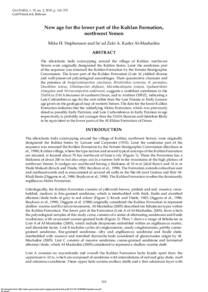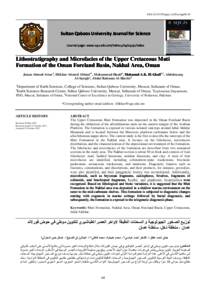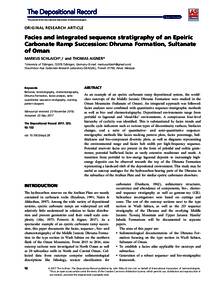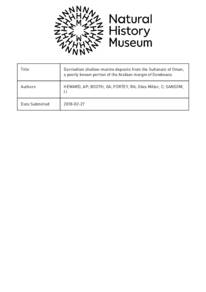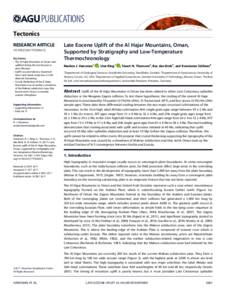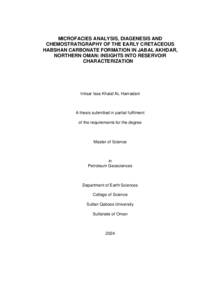Document
New age for the lower part of the Kuhlan formation, northwest Yemen.
Identifier
DOI: 10.2113/geoarabia1502161
Contributors
Publisher
Gulf Petrolink.
Gregorian
2010-04
Language
English
Subject
English abstract
The siliciclastic beds outcropping around the village of Kuhlan, northwest Yemen were originally designated the Kohlan Series. Later the sandstone part of the sequence was renamed the Kuhlan Formation by the Yemeni Stratigraphic Commission. The lower part of the Kuhlan Formation (Unit A) yielded diverse and well-preserved palynological assemblages. Their quantitative character and the presence of Anapiculatisporites concinnus, Brevitriletes cornutus, B. parmatus, Deusilities tentus, Dibolisporites disfacies, Microbaculispora tentula, Spelaeotriletes triangulus and Verrucosisporites andersonii, suggests a confident correlation to the 2165A to 2141A biozones of southern Oman, and to Arabian OSPZ2, indicating a Late Carboniferous age for the unit rather than the Late Triassic to Early Jurassic age given on the geological map of western Yemen. The date for the lower Kuhlan Formation indicates that the underlying Akbra Formation, which was previously dated as possibly Early Permian, and Late Carboniferous to Early Permian in age respectively, is probably not younger than the 2165A Biozone and therefore likely to be equivalent to the lower parts of the Al Khlata Formation of Oman.
Member of
ISSN
1025-6059
Resource URL
Category
Journal articles

